Art World
Street Art Is a Global Commercial Juggernaut With a Diverse Audience. Why Don’t Museums Know What to Do With It?
Experts weigh in on what's keeping the most popular form of contemporary art from museum credibility.
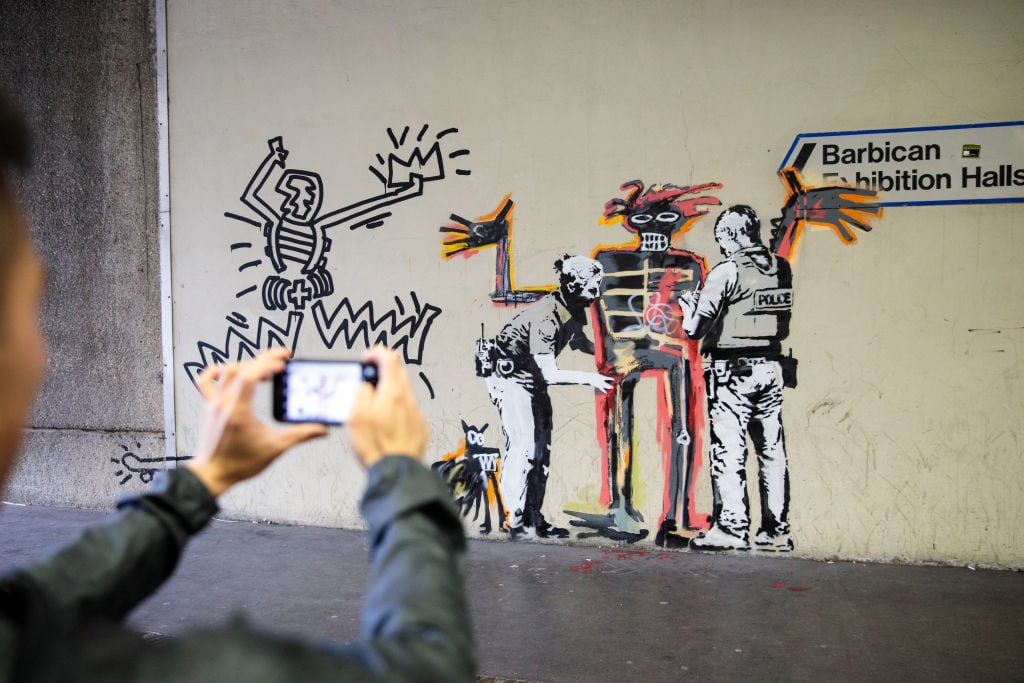
Experts weigh in on what's keeping the most popular form of contemporary art from museum credibility.

Naomi Rea

Street art is far and away the world’s most globally accessible genre of contemporary art. It’s shared obsessively on social media, courted by fashion and lifestyle brands, and now, a darling of the commercial art market as well. If there was any perception that work by street art’s stars was too lightweight to be taken seriously, the $14.7 million paid for a painting by KAWS earlier this year at least made those doubters sit up and pay attention.
For museums looking for prestige and new audiences, this combination of market power, press interest, and popular cachet seems like it should make street art a natural fit. And yet almost a decade has passed since Banksy’s surprise retrospective at the Bristol Museum drew more than 300,000 visitors over the course of its 12-week run, making it the most popular show outside of London that year. Today, the British Museum is still the only high-profile UK museum that has added his work to its permanent collection: Banksy’s fake banknote, Di-Faced Tenner, featuring Princess Diana, which was donated by the artist’s representative, Pest Control, earlier this year.
In the US, eight years have passed since LA MOCA broke attendance records for its “Art in the Streets” show featuring a host of street art stars. Certainly, artists from Shepard Fairey to Swoon to KAWS have gotten museum attention. Most recently, the Brooklyn Museum announced that it would do a retrospective of the prolific French street artist JR. And yet, it definitely does not seem as if museums’ flirtation with the genre is about to become a firm embrace. So what are the issues faced by the field, and what’s stopping a full-scale love affair between the museum and the street?
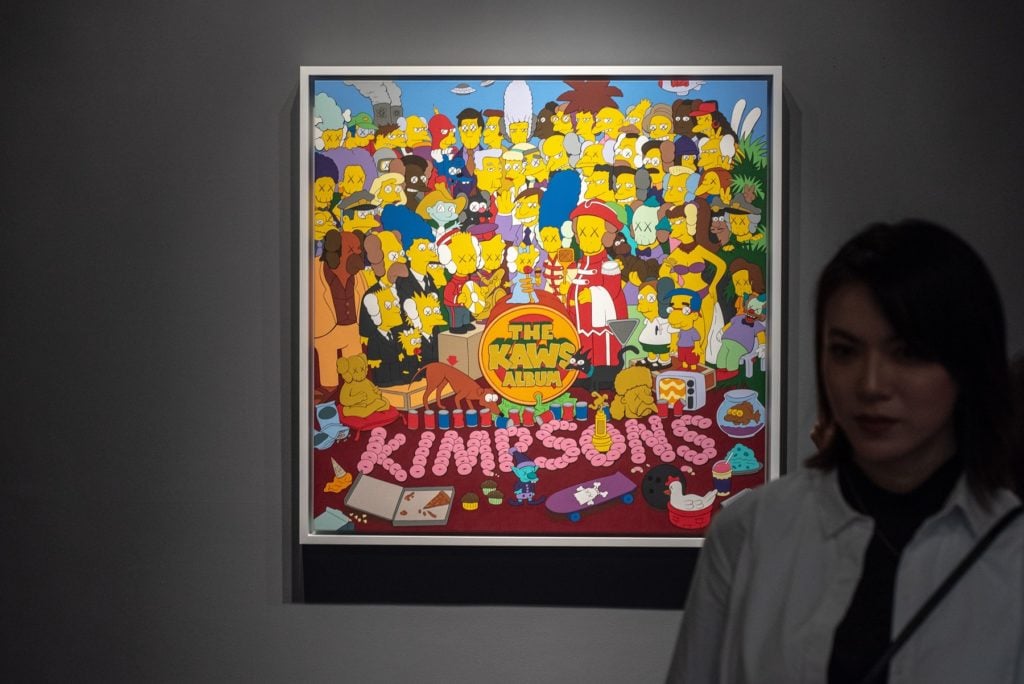
A woman poses for a photograph in front of US artist KAWS, Untitled (Kimpsons #3) during Sotheby’s Hong Kong’s media tour on March 29, 2019. Photo courtesy Philip Fong AFP/Getty Images.
One problem for art institutions is simply definition.
The terms are blurry, but whereas “graffiti art” classically referred to spray painted tags or murals featuring a given artist’s name, “street art” suggested a more image-based genre that expanded to stencils, stickers, wheat-pastes, and various other forms of visual trickery in the urban environment, sometimes interacting directly with its surroundings, such as existing signage or the convenient positioning of a tree.
This makes “street art” somewhat more visually appealing than classic tags. However, the name itself suggests that the work’s value remains rooted in public space (i.e. the street), putting it at odds with the two contexts taken most seriously by the art world: the market and the museum. Some argue that divorcing street work from its original context in order to sell or archive it removes some of its anarchic magic, even as some of its artists have expanded their practices radically beyond alleyways and overpasses—albeit in ways that still don’t necessarily fit into the traditional museum framework.
For instance, KAWS got his start as a street artist, but his output isn’t limited to the street. Are the limited-edition toys and KAWS-branded clothes “street art” in the same way as his “subvertized” bus shelters and phone booths are?
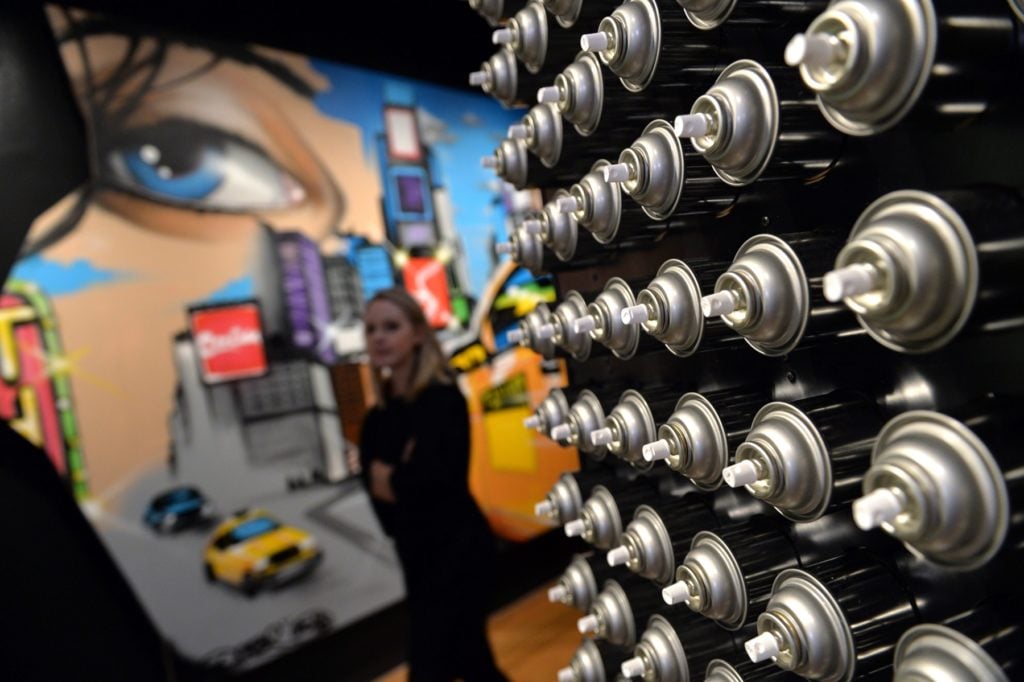
A wall of spray paint cans constructed for the exhibition “City as Canvas: GraffitiArt from the Martin Wong Collection” is seen with Reflections on Times Square #2 (2013) by Chris “DAZE” Ellis at the Museum of the City of New York February 3, 2014 in New York. Photo courtesy Stan Honda AFP/Getty Images.
Tina Ziegler, a curator who is the director of street art fair Moniker, says that the movement is having an “identity crisis.” For Ziegler, “urban contemporary” has become a better handle because it can include art made in the studio, such as installations, prints, and paintings on canvas. The defining characteristic shared with street art proper, Ziegler says, is its accessibility, and the motivation to take artwork outside of the stuffy walls of an art gallery and into the public domain. That said, Ziegler admits that “street art” still communicates quickly to a mass public what her fair is about.
Others, such as Liam West, the director of art consultancy West Contemporary and the street art gallery and branding agency Beautiful Crime, might eschew the euphemistic qualifier “urban,” and argue that street art now falls within the genre of contemporary art, with names like Banksy and KAWS fixtures of contemporary sales at the major auction houses.
“Banksy has done wonders for the credibility of the genre—he really brought street art into the mainstream,” West says. “My mum knows who Banksy is, but she has never heard of Andy Warhol.”
This very popularity, however, may point to a different reason you don’t see more street artists’s work in museums: Street artists are focused on a different set of opportunities to begin with. West’s job is to help street artists navigate between the street and the market, but in a very different way than traditional gallerists, who help find collectors, and place works with prestigious institutions.
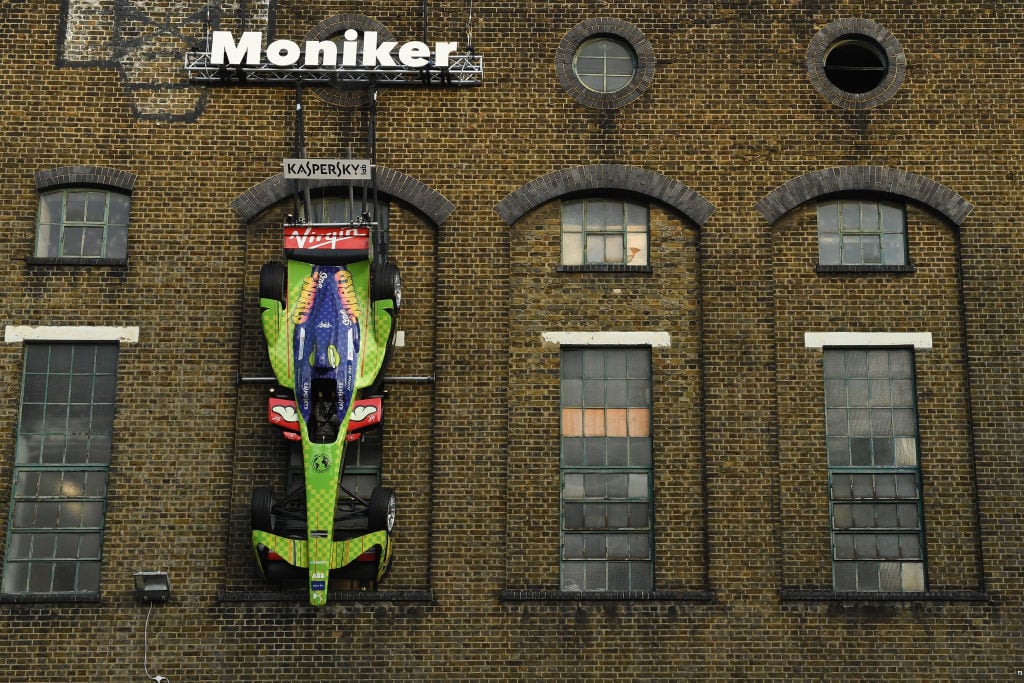
A “Formula art car” by street artist D*Face for Kaspersky Lab at Moniker Art Fair in East London on October 4, 2018. Photo by Ian Gavan Getty Images for Kaspersky Lab.
West compares putting a street artist on a gallery contract to “chaining up a dog.” Instead, he uses his experience in printmaking to help produce commercial editions, and offers artists an outlet to sell their work. That service, he says, has become less necessary now that social media can do some of the heavy lifting in connecting an artist to an audience. The fact remains that an established career path for a street artist to make a living is through selling multiples to an audience of fans rather than creating one-of-a-kind artworks destined for gallery or museum display.
West’s branding agency also helps street artists recognize commercial opportunities, which he says often come from companies traditionally thought of as “uncool” trying to buy some street cred. He has hooked up street artists with luxury brands, including Louis Vuitton, as well as tech giant Microsoft.
Real estate developers are also interested in commissioning street artists to create murals on their building sites as a way of “creative placemaking,” and to boost sales. But it is not just private entities that have grasped the appeal of street art. Local governments around the world are increasingly integrating mural programs in their cities as a way to deter unsanctioned graffiti art.
The art world establishment was not always prejudiced against street art. The esteemed curator Rudi Fuchs included Basquiat (who was just 21), Keith Haring, and Lee Quiñones in the prestigious documenta 7 in 1982. More than three decades later, Basquiat and Haring are some of the most famous artists of the ’80s generation. The Guggenheim New York is currently presenting a critically acclaimed Basquiat exhibition, and Haring is getting a Tate survey in Liverpool.
But the art world’s ’80s interest in graffiti was soon displaced by neo-conceptualism, and many artists central to this early discourse were left behind. Rammellzee, an artist who worked with Basquiat, was given the rediscovery treatment last year at Red Bull Arts in New York.
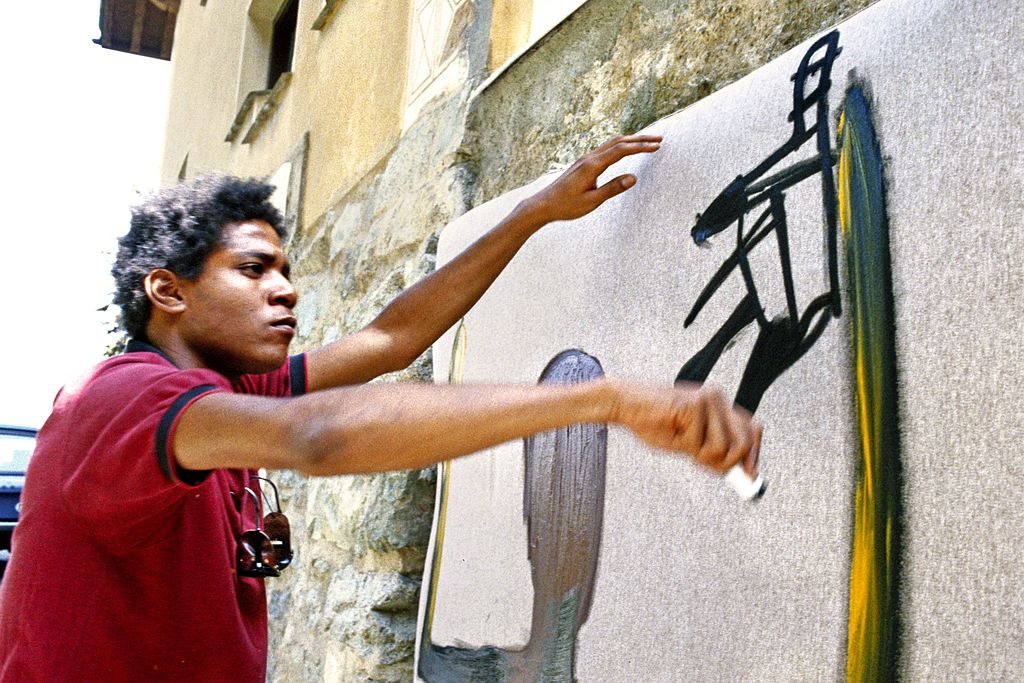
Artist Jean-Michel paints in 1983 in St. Moritz, Switzerland. Photo by Lee Jaffe/Getty Images.
In 2011, the then director of LA MOCA, Jeffrey Deitch, together with Roger Gastman, put on “Art in the Streets” at the Geffen Contemporary in downtown Los Angeles. The sprawling show included famous and less-well-known street artists, tracing a global history of graffiti art. In its 113-day run, it welcomed more than 200,000 visitors, making it the institution’s best attended exhibition and showing the drawing power of the genre.
“It truly was one of the most thrilling things I’ve ever been involved in,” Deitch tells artnet News. The art dealer turned museum director recalls the public’s enthusiastic response, which climaxed on the final day of the show, when 8,500 people turned out to see it, and the museum reached maximum capacity. Deitch says the lines were populated by people from all generations and walks of life. “It was the type of line you would see for a sports event, or for Disneyland,” he recalls.
While the show received attendance figures comparable to the blockbuster shows at the Met, it also received mixed reactions from the art world. The original exhibition was meant to travel to the Brooklyn Museum in 2012, but it had to be canceled, ostensibly due to “financial difficulties.” Deitch says the real story was that problems arose for the exhibition after the LAPD vandal squad leaked a report to the press connecting the exhibition to an uptick in graffiti and vandalism in Downtown LA.
This points to the lingering negative associations that may explain why museums are slow to embrace the form. Due to the anti-establishment nature of much street art, the movement is still often associated with crime. The prejudice runs so deeply, says Deitch, that he was even forced to intervene when LA MOCA began to install metal detectors at the door to the show. He had them removed, and the exhibition proceeded with “zero incidents” throughout its run.
“The overwhelming response to the show blew their minds,” Deitch says, accusing its critics of believing the “false narrative” propagated by the LAPD, which was soon picked up by the media. A fellow at the Manhattan Institute, Heather Mac Donald, went as far as to accuse LA MOCA of “glorifying vandalism.” Eventually a New York City councilman, Peter F. Vallone Jr., challenged the Brooklyn Museum on its proposed hosting of the show. In a letter to the then director of the Brooklyn Museum, Arnold Lehman, Vallone urged him to pull the exhibition, even threatening to remove the $9 million the museum then received annually from the city.
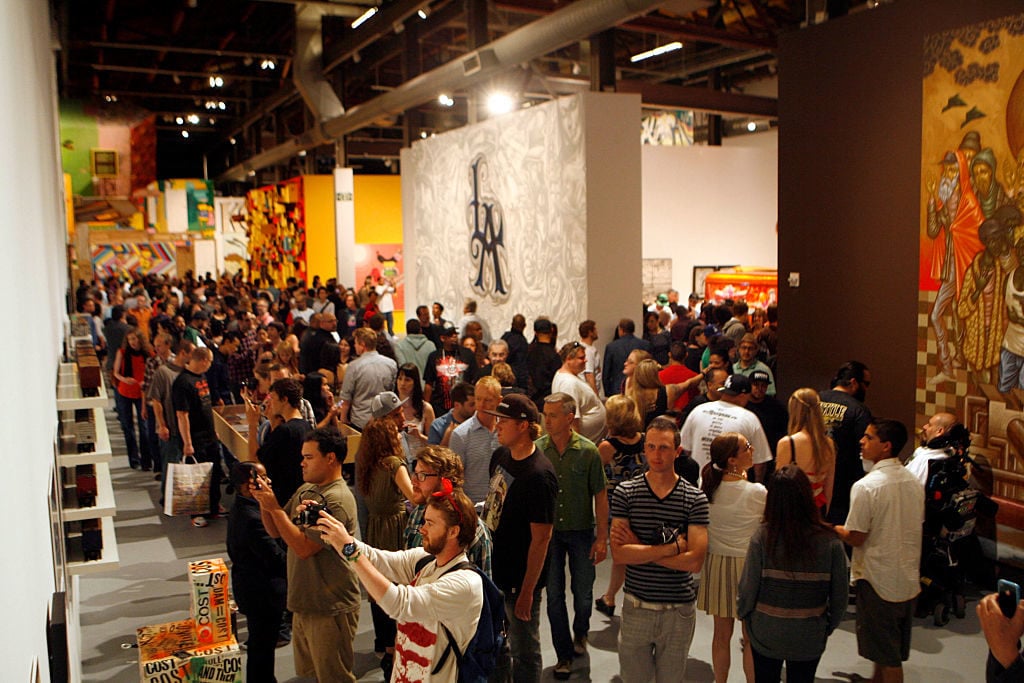
People view art on display during the member’s reception of “Art in the Streets” at the Geffen Contemporary at MOCA in Los Angeles, April 16, 2011. Photo by Ann Johansson/Corbis via Getty Images.
“I don’t blame them for bowing out,” Deitch says, acknowledging that the Brooklyn Museum went on to invite the same artists to exhibit on an individual basis in more low-key shows.
Despite the fact that the magic of “Art in the Streets” has yet to be replicated by a major museum in subsequent years, Deitch is confident that the interest from the public is ultimately going to drive a change. “The same used to apply to Basquiat,” he observes. “Now his shows are some of the best attended in the world, but for a long time he was not taken seriously by the museum establishment.”
For Martyn Reed, an artist, director of a street art festival, and co-editor of Nuart Journal, an academic journal devoted to street art, museums’ “archaic structural mechanisms” are to blame for their resistance to embracing the movement. He argues that museums are threatened by street art because its practitioners have found an alternative route to success. After all, Reed asks, “what is contemporary art without institutional validation?”
When it comes to curatorial interest in street art, Reed says there is some interest from newcomers, but that they soon struggle to be heard in the art world’s “hermetically sealed echo chamber” without caving to the already established hierarchy.
“The exponential expansion of the culture sector rests entirely on a quite narrow demographic of white, middle class, educated staff and visitors who have signed a social contract on what and who constitutes value in the field of visual art,” Reed says. “Until there’s radical change in the makeup of institutional bureaucracies and boards, that’s unlikely to change.”
Reed has his own thoughts on the art world’s recent attempts to reclassify the genre. He sees the excision of “street” from “street art” and the substitution of “urban” as a gentrifying impulse. Worse still, he says, is the term “urban contemporary,” which he calls “street art’s cleaned-up neoliberal cousin.”
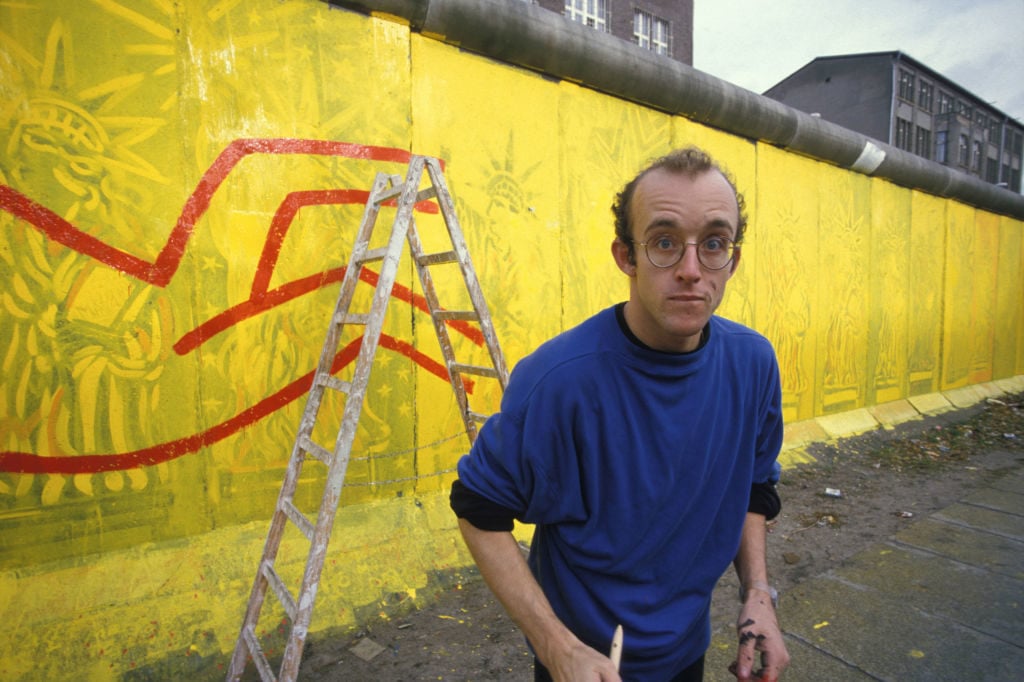
Keith Haring painting on the Berlin Wall in October 1986. Photo by Patrick PIEL/Gamma-Rapho via Getty Images.
In this vein, another street art scholar and Nuart Journal co-editor, Susan Hansen, warns that it is important for academics to be critically reflexive about the impact of their scholarship. While Hansen says it is “absolutely vital” to look at street art seriously from an academic perspective, she says that museums and scholars need to be careful. “Within the subculture, some are wary of the potential influence of street art research in terms of the institutionalization and commodification of what has long been perceived as a ‘free’ democratic art form, and of the possibility of our research being used to justify problematic placemaking projects, and to facilitate the gentrification of our cities.”
Hansen makes an interesting point. Street art is clearly having a significant impact on the contemporary art scene, and there is ample public demand for it in museums. But how do you commission or collect street art without transforming it into something else? Are those who attempt to “chain the dog” betraying the rebellious spirit of the genre? The solution might lie somewhere between collecting materials, archiving photographs, and commissioning work, as well as curatorial research into tackling these questions.
The London-based street artist Endless agrees that museums should preserve artworks and educate the public on the transformative impact of street art on society. He sees the increased recognition as taking a positive turn. “The positioning of street art today is in a good place, where artists have more opportunities to explore their practice and follow the path they have chosen,” the artist says.
He does hasten to add, however, that “the real value and power lies on the streets, where the artwork is seen in its most free and raw form.”